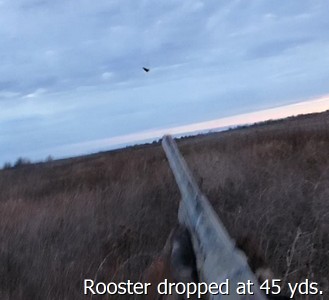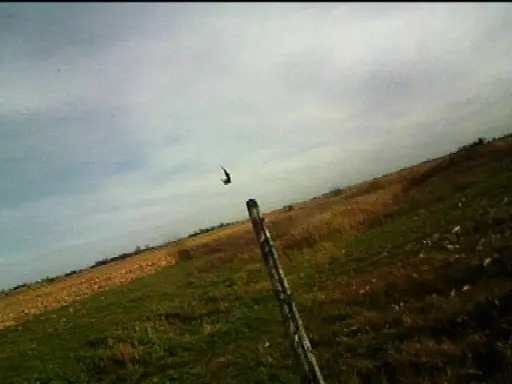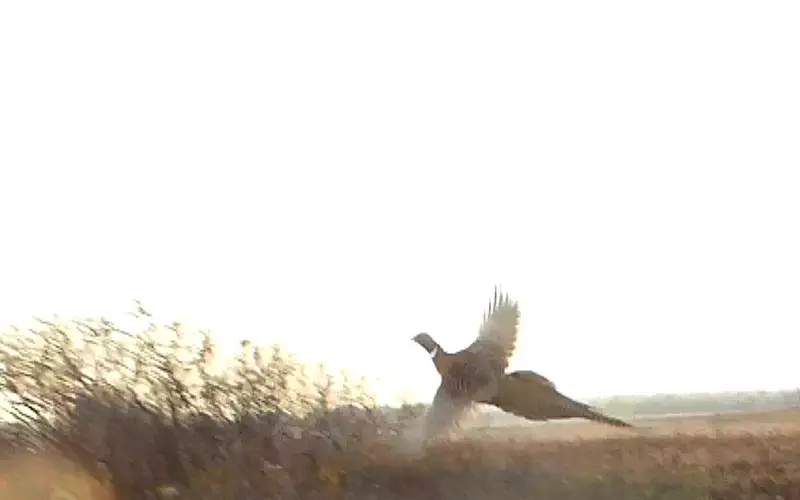
SHOTGUN PATTERN LOSS BY RANGE
Oberfell & Thompson
Pattern Percentages for All Degrees of Choke for All Distances
Pattern Percentages Distance in Yards
|
Choke |
15 |
20 |
25 |
30 |
35 |
40 |
45 |
50 |
55 |
60 |
|---|---|---|---|---|---|---|---|---|---|---|
|
Full |
100 |
100 |
100 |
96 |
82 |
70 |
58 |
48 |
39 |
32 |
|
Modified |
100 |
100 |
96 |
83 |
71 |
60 |
49 |
39 |
32 |
26 |
|
IC |
100 |
96 |
83 |
71 |
60 |
50 |
41 |
32 |
26 |
21 |
|
Cylinder |
98 |
83 |
71 |
59 |
49 |
40 |
33 |
26 |
21 |
17 |

The classic rule of thumb
is roughly a 10% loss in pattern percentage for every five yards of
additional range beyond the industry standard 40 yards. It isn't
exact, it never was, not much in the land of shotguns is perfectly
precise, but it is a generalization.
From a wingshooting perspective, range matters, for unlike skeet or trap the ranges you shoot at are not known, repeatable ranges. It is always a compromise.
A 70-75% 40 yard pattern percentage of #5 lead shot is close to an ideal pattern for my purposes. That is with the assumption of a 1-1/4 oz. payload and you're good to go to roughly 50 yards, where your pattern may now be 50-55%.
A pattern percentage has to be of something, and in the case of 1-1/4 oz. of #5 shot, it is about 212 pellets to start with, with 106 – 116 pellets left in a 30 inch circle at 50 yards.
Drop to 1 oz. of #5 shot, your 70% pattern is 119 pellets. Using the same parameters, a 1 oz. payload is good to about 40 yards, a 1-1/8 oz. payload to 45 yards, and with 1-1/4 oz. we are back where we started at 50 yards. You can squeeze out a few more yards with a buffered 1-3/8 oz. shell, but with a few caveats. While ¼ oz. of shot is a 25% payload (and pellet count) increase when starting with a 1 oz. load, upping the payload from 1-1/4 to 1-3/8 oz. is about a 22 pellet increase, or only about a roughly a 10% increase.

It is something, of course, but although that 1-3/8 oz. load sounds perhaps a 5 yard increase in range, it doesn't change the lethality of the pellet. A 1330 fps 3 foot muzzle velocity shell of #5 shot leaves a 627 fps impact velocity at 50 yards for about 1.68 inches of gel penetration. It means that #5 shot isn't particularly good at breaking bones or penetrating as ranges increase past 50 yards, so that necessitates larger pellets. There is no free lunch there, however, as a 1-3/8 oz. payload of #4 shot is about 186 pellets, a significant drop from our softer-recoiling 1-1/4 oz. payload of number 5 shot.

To fight back to the 212 pellet range of the original 1-1/4 oz. payload of #5 shot, we need a 1-5/8 oz. payload of #4 shot (about 219 pellets). We still haven't bettered our situation, for to get that extra 5 yards we need a pellet count of approaching 235 pellets to maintain pattern density, and that means in terms of commercially available loads, the jump is to the 253 pellet, #4 shot, 1-7/8 oz. 3 inch unfolded length 12 gauge shell, the “Blocker Load.”
As always, there is no free lunch, for in a lightweight shotgun, 1-7/8 oz. payloads are a great way to find that flinch you've always wanted. It may not matter to you on a turkey hunt, but when a pair of wild roosters hits the air you need to recover from the recoil of the first shot and get back on the second bird just as soon as possible. A heavier, slower, less responsive gun helps with shot recovery time, but now you've got a gun that isn't a wonderfully great joy to carry and is slower to shoulder and swing as well.